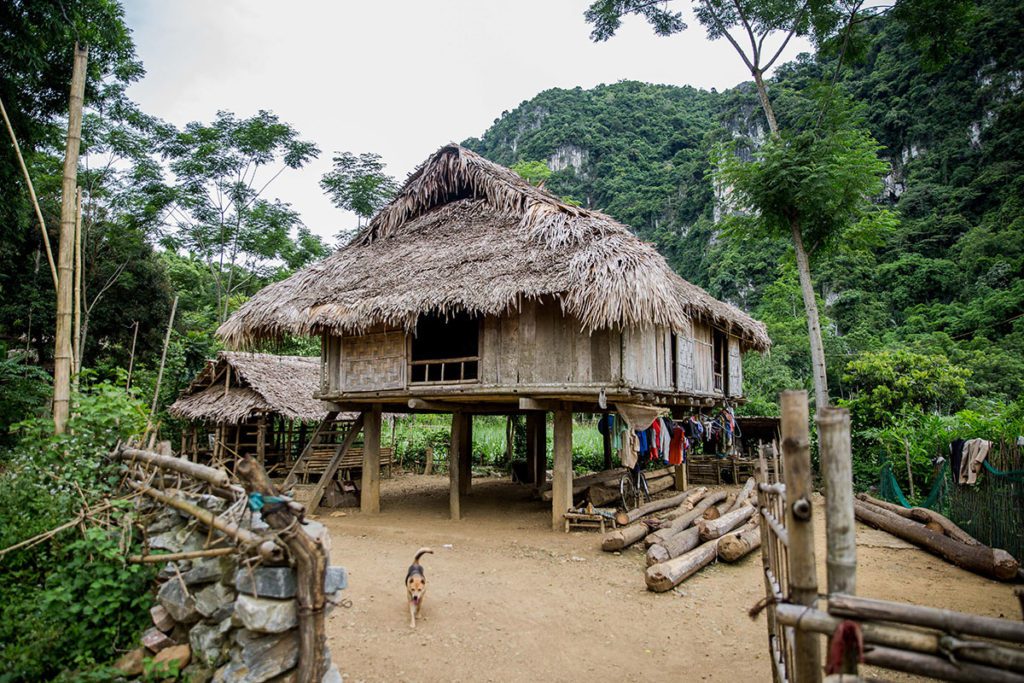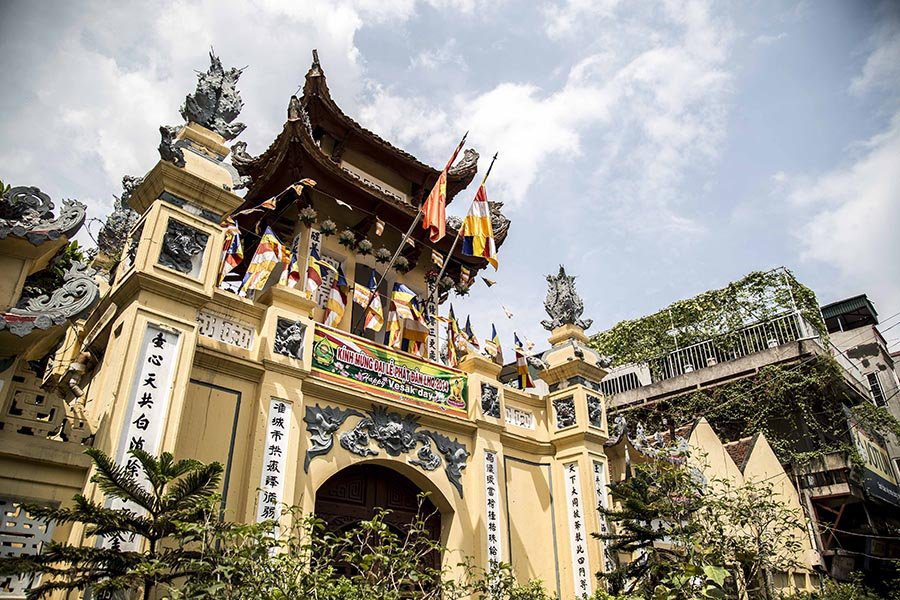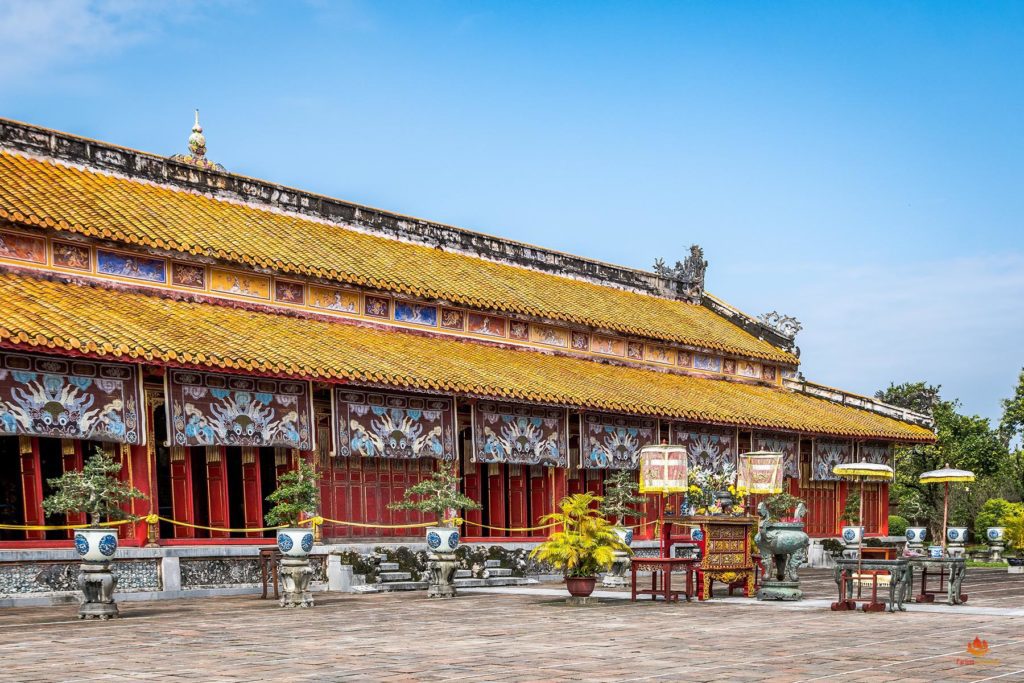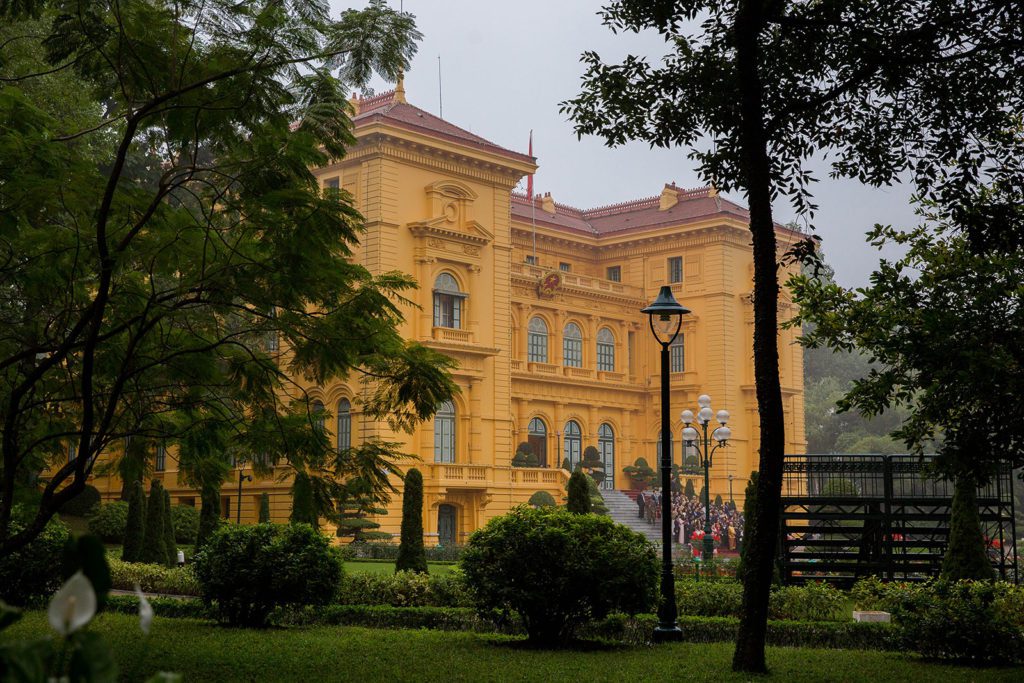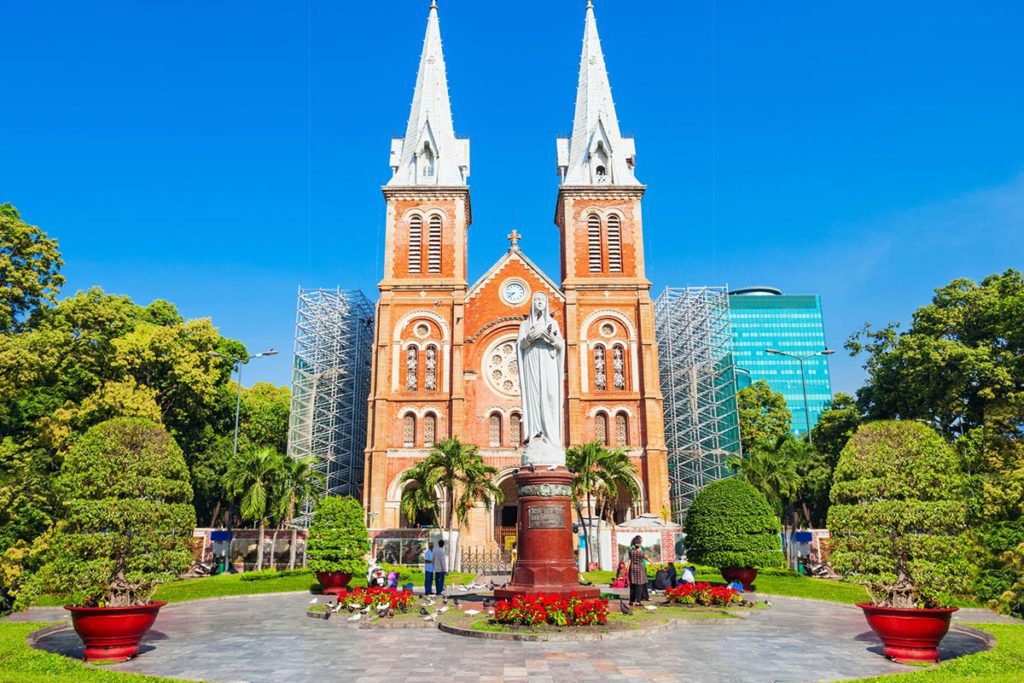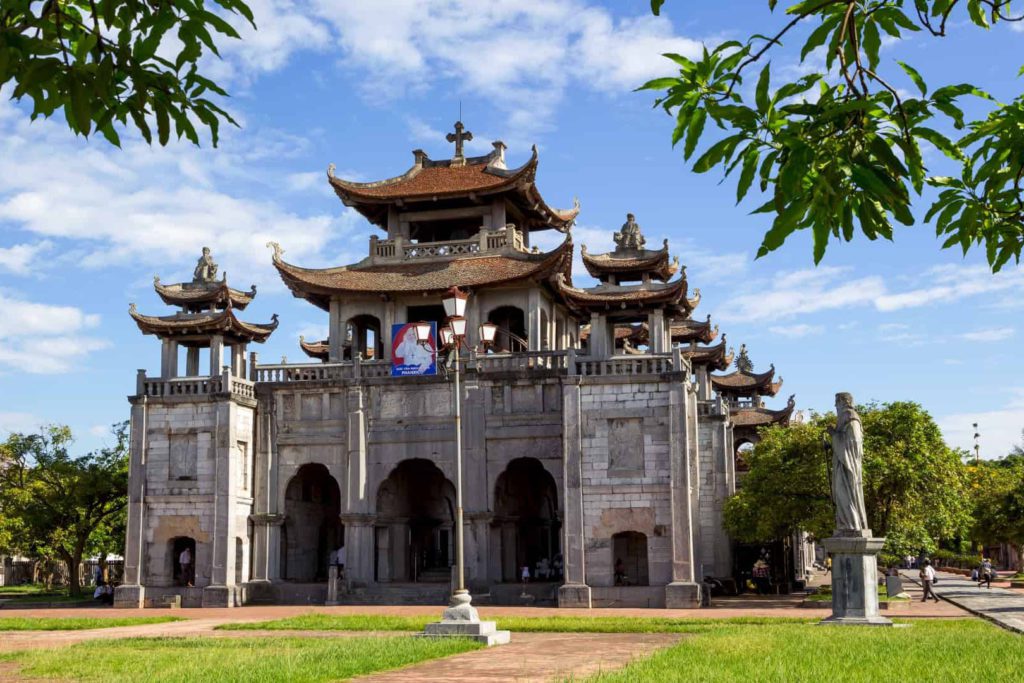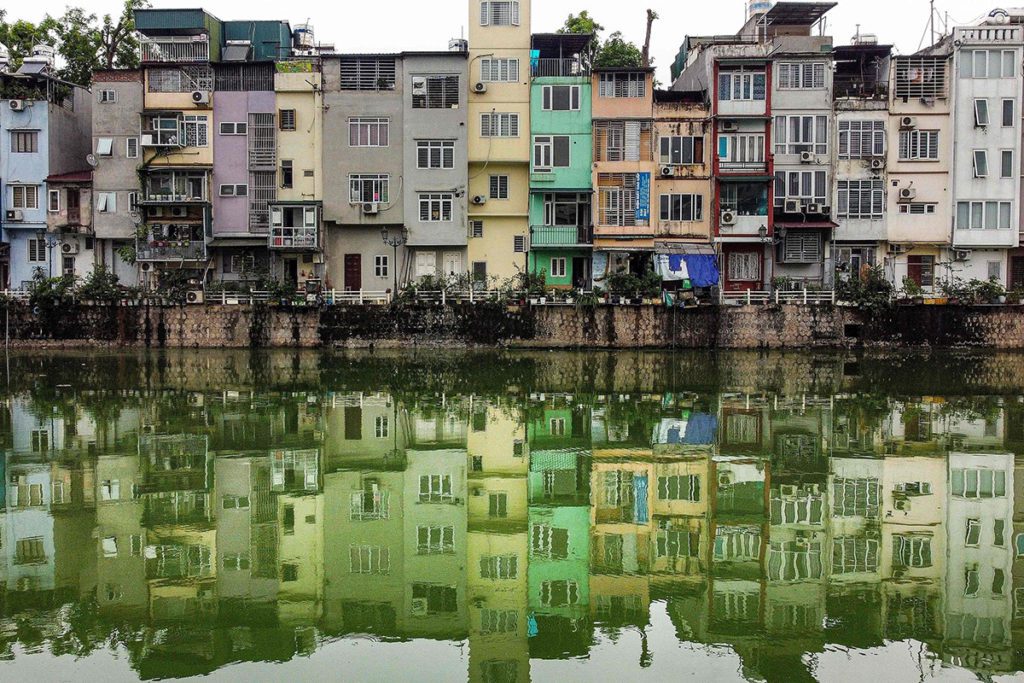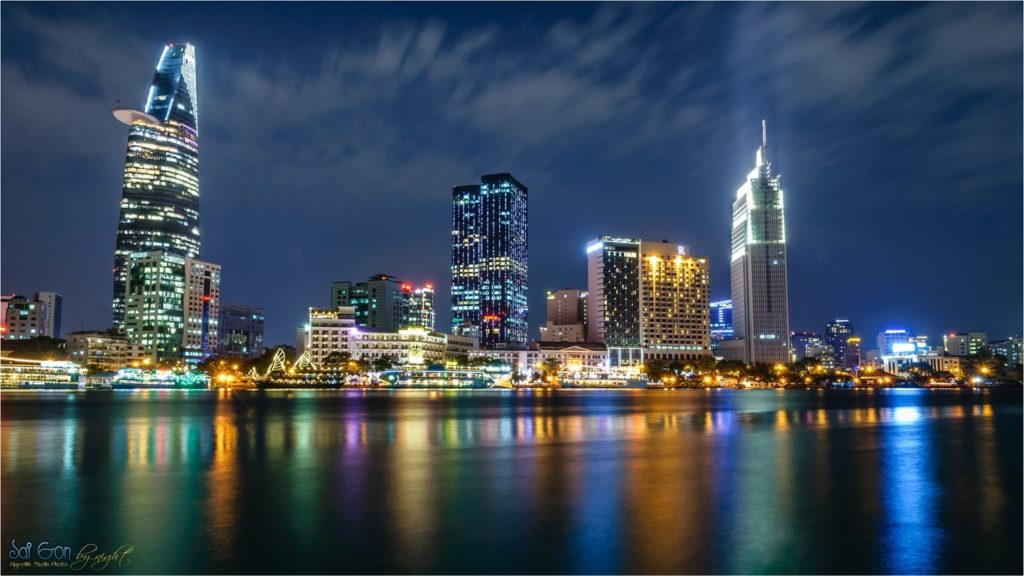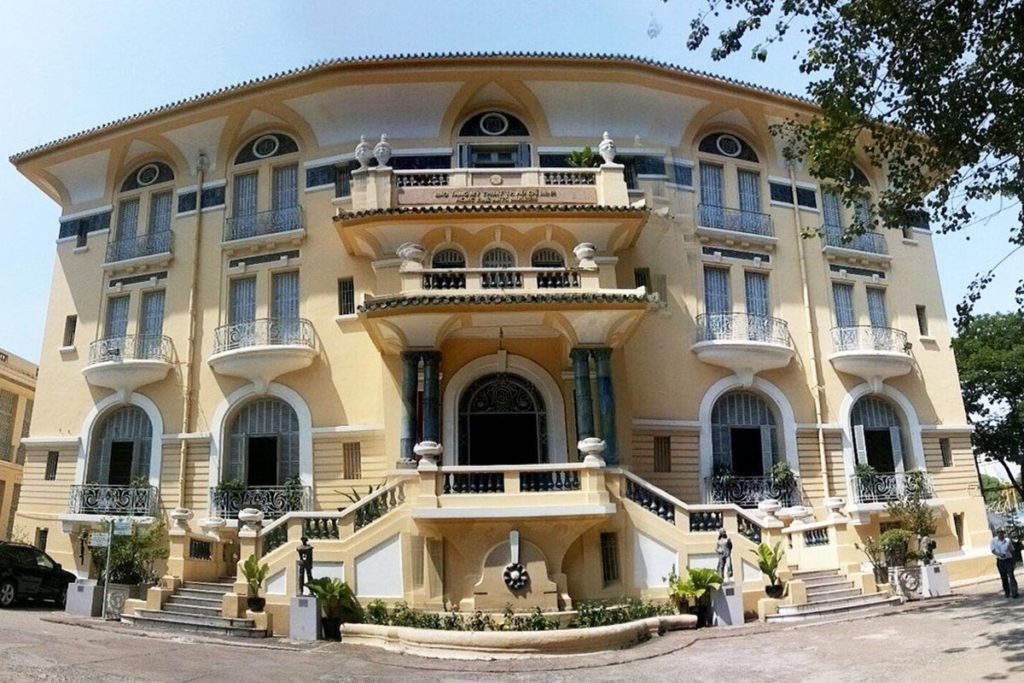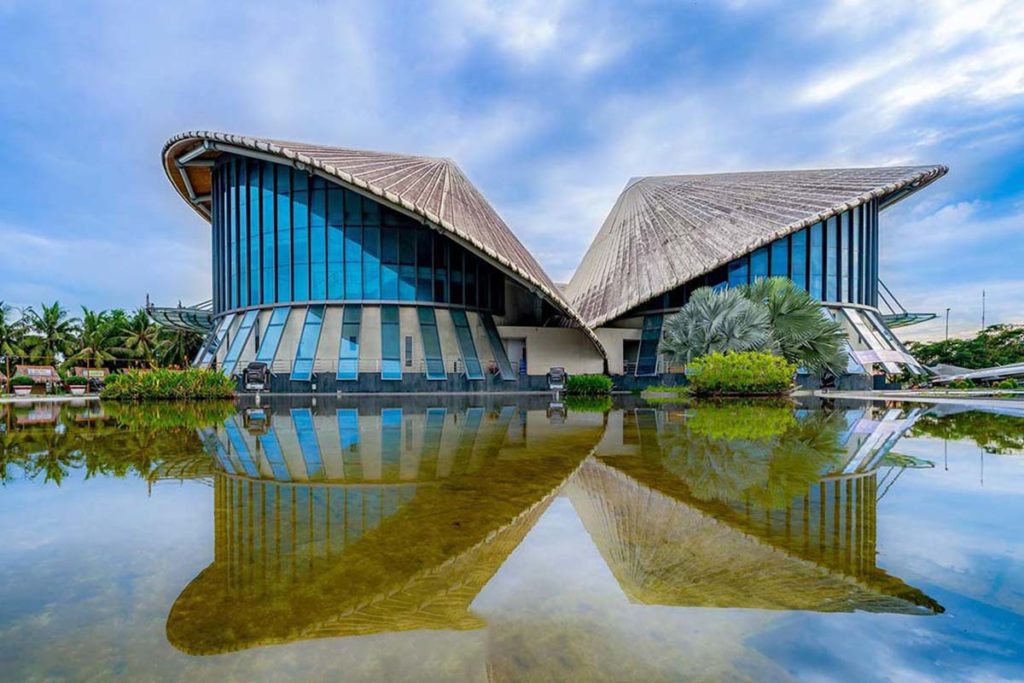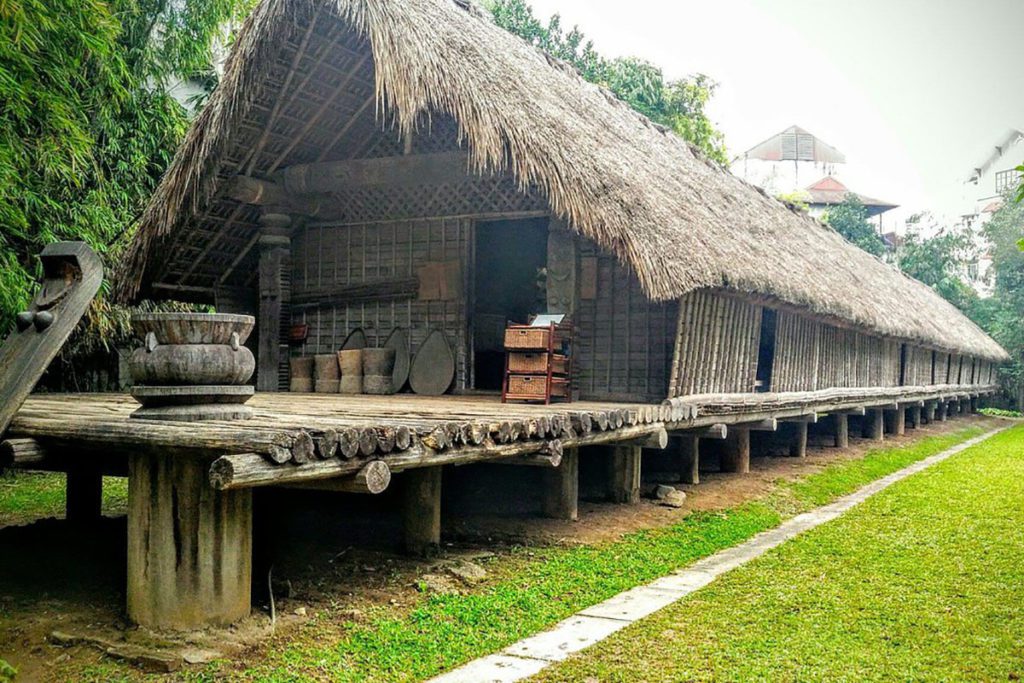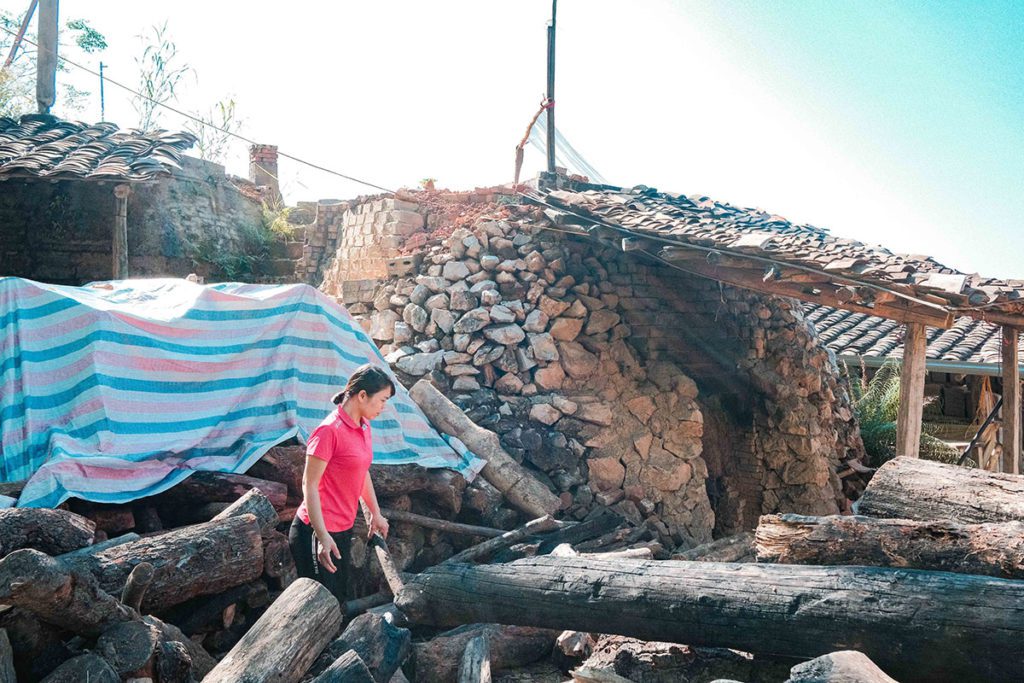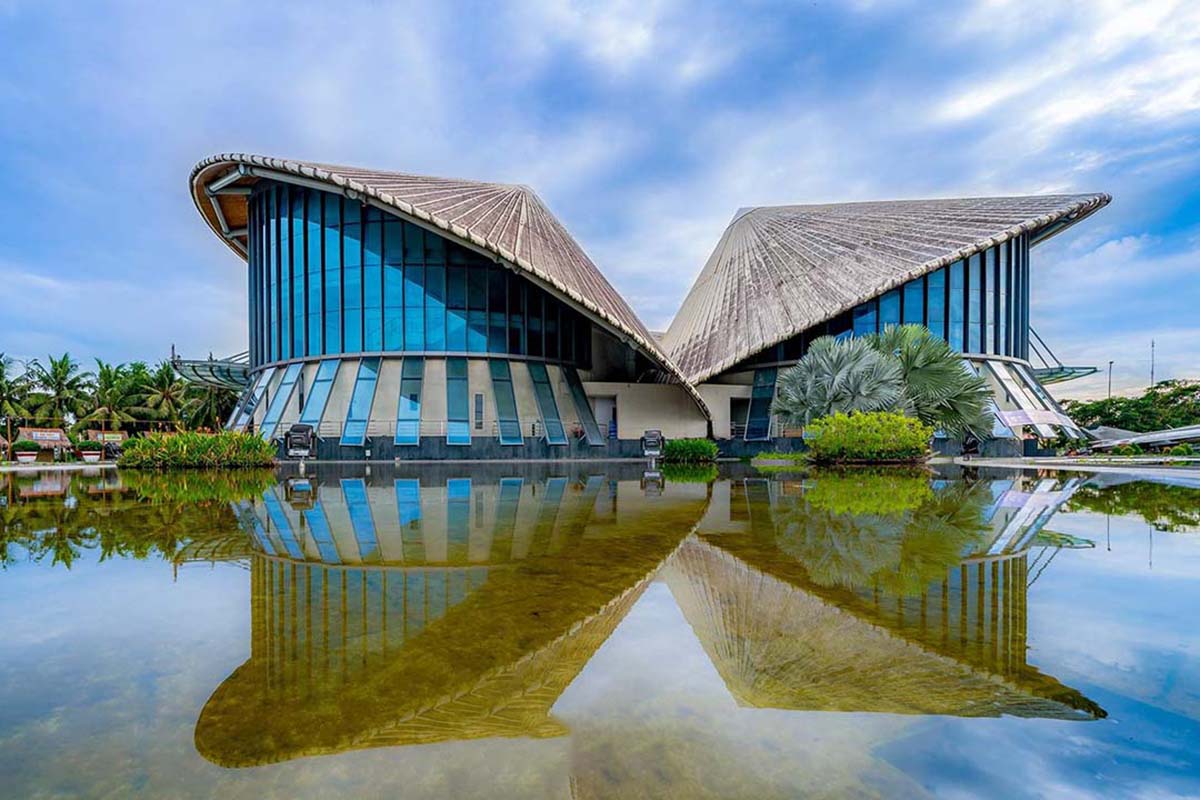
Vietnamese architecture: a journey through the ages
Vietnam, the dragon-shaped country in Southeast Asia, has long been a favored destination for travelers seeking enriching adventures. With its spectacular landscapes, delicious cuisine, and tumultuous history, Vietnam offers an unforgettable travel experience. Beyond its pristine beaches and breathtaking terraced rice fields, Vietnam also harbors an architectural treasure that tells the country’s fascinating and diverse story.
As one strolls through the bustling streets of historic cities and explores traditional villages nestled in the heart of the mountains, travelers are immersed in a world where architecture is more than just a construction of bricks and mortar. It is the tangible reflection of a tumultuous history, a rich culture, and an ever-evolving identity.
Vietnamese architecture truly embodies the soul of the country, bearing witness to the varied influences that have shaped its different historical periods. From the rich tradition of vernacular architecture to the imprint left by French colonization, and on to the contemporary expression of modernity, each building, temple, and palace tells a unique story.
In this article, we will delve into the heart of this fascinating architectural history of Vietnam. We will explore the distinctive features of traditional Vietnamese architecture, how elements of French colonization have left their mark, and the modern architecture that reflects the country’s growth and innovation. Additionally, we will address the complex challenges associated with preserving this precious architectural heritage in an ever-changing world.
Prepare to be transported through time and space as we dive into Vietnam’s dazzling architecture, a visual and tangible testament to its diverse past and promise for the future.
Please contact us in order to organize your cultural tour in Vietnam.
Table des matières de l'article
Traditional vietnamese architecture
Traditional vietnamese architecture is a living testament to a time when the relationship between humans and nature, as well as spiritual beliefs, were deeply ingrained in the design of buildings. This architecture, born from a subtle blend of construction techniques and philosophy, reflects the cultural identity of Vietnam.
Use of local materials
Materials used in traditional vietnamese architecture were carefully chosen to suit the tropical climate and local resources. Wood, bamboo, and terracotta tile were the primary elements. Wood, in particular, was ubiquitous in construction, allowing for great architectural flexibility and adaptation to changing weather conditions.
Stilt houses
A distinctive feature of traditional vietnamese architecture is the construction of houses on stilts. This technique, both functional and historical, emerged to deal with seasonal floods and water level variations. Stilt houses also provided protection against wild animals and allowed for natural ventilation in the hot and humid climate of the country.
Thai typical stilt house, Pu Luong. Crédit : Mathieu Arnaudet
Influence of natural elements and feng shui
Traditional Vietnamese architecture was deeply influenced by the elements of nature and the philosophy of feng shui. Buildings were designed in harmony with their surroundings, using shapes and symbols inspired by nature such as waves, mountains, and rivers. Feng shui, on the other hand, dictated the arrangement of buildings to maximize energy balance and the well-being of the occupants.
Iconic examples
Communal Houses (Đình): at the heart of Vietnamese villages, communal houses, or Đình, served as spiritual and cultural centers. These buildings were not only places of worship but also gathering spots for the community. Đình were adorned with intricate sculptures and elaborate architectural details, symbolizing the cultural richness and spirituality of the village.
Pagodas: vietnamese pagodas are architectural gems that embody the union of religious architecture and Buddhist philosophy. The curved roofs of pagodas resemble ocean waves and mountains, creating a soothing aesthetic. The intricate details of wooden sculptures and wall frescoes tell rich religious and cultural stories.
Pagoda in Hanoi, Vietnam. Crédit : Mathieu Arnaudet
Imperial Cities: Vietnam’s imperial cities were the seats of power for royal dynasties. Notable examples include the Imperial City of Hue. These magnificent and elaborate complexes were designed to reflect the grandeur and dominance of the rulers. The architecture of imperial cities featured majestic gates, spacious courtyards, and richly decorated pavilions.
Imperial city of Hue, Vietnam
Traditional vietnamese architecture transcends time, offering a unique window into the history, culture, and beliefs of the country. Each architectural element tells a profound story and invites travelers to delve into the very roots of the Vietnamese nation.
French colonial legacy
Historical context
French colonization in Vietnam left a deep and lasting imprint on the country. Starting in the mid-19th century, France exerted its political and economic influence over Vietnam as part of French Indochina. This period of domination not only transformed the country’s social and economic structure but also left a distinctive mark on its architecture.
The french influence on architecture
The influence is still evident today in numerous buildings.
Government and administrative buildings: French colonization introduced a new architectural aesthetic with imposing government and administrative buildings. Neoclassical-style buildings were characterized by Corinthian columns, triangular pediments, and elaborate sculpted details. These structures served as the seat of colonial power and reflected the authority and grandeur of France.
For example, the current Presidential Palace in Hanoi, formerly the residence of the Governors of Indochina, can be mentioned. It was constructed between 1900 and 1906 by Auguste Henri Vildieu under the commission of Governor Paul Doumer.
Presidential palace. Crédit : Mathieu Arnaudet
Cathedrals and churches: French architectural influence is also evident in cathedrals and churches built during this period. The Notre-Dame Cathedral Basilica of Saigon is an iconic example of French neo-Romanesque architecture. Pointed arches, colorful stained glass windows, and sculpted elements were typical features of these churches, reflecting both religious faith and French aesthetics.
Notre-Dame of Saïgon cathedral in Ho Chi Minh City.
The elegant fusion of styles
What is remarkable in colonial architecture in Vietnam is how architects managed to blend French elements with Vietnamese traditions. This fusion can be seen in subtle details such as the use of traditional Vietnamese tiles on French-style structures, creating a unique aesthetic that reflects the harmony between two distinct cultures.
A perfect example of this fusion is the Phat Diem Cathedral in the vicinity of Ninh Binh. It was Father Tran Van Luc, also known as “Father Six,” who oversaw the construction of this immense structure, which includes three artificial caves and five chapels.
Phat Diem cathedral, in the Ninh Binh surrounding area
The presence of french colonial architecture in vietnamese cities is a tangible reminder of the country’s complex history. These buildings bear the marks of a bygone era while being integrated into the contemporary urban fabric. They serve as witnesses to the transition between the past and the present, reminding both Vietnamese people and visitors of the importance of understanding and preserving their diverse architectural heritage.
Moderne architecture : between tradition and innovation
Transition toward contemporain architecture
After Vietnam’s independence, the country’s architecture underwent a major transformation to meet the needs of a rapidly growing modern society. The post-independence period was marked by the influence of international architectural trends as well as the desire to preserve Vietnamese cultural identity. This duality between tradition and innovation has shaped the country’s contemporary architecture.
Influence of foreign influences: The post-independence period saw the emergence of a complex blend of architecture inspired by Western movements such as modernism and brutalism, along with traditional Vietnamese elements. Modern Vietnamese architecture has sought to reflect the country’s aspiration to modernize while honoring its rich cultural heritage.
Balancing urbanization and heritage preservation: The rapid urbanization of Vietnamese cities presents unique architectural challenges. Striking a delicate balance between the need to create functional and sustainable spaces for a growing population and preserving precious architectural treasures from the past is a challenging task. Authorities and architects must navigate between necessary modernization and respect for history.
Exemples of contemporain architecture
“Tube Houses”: A compelling example of this reinterpretation is that of “tube houses.” In the heart of Vietnam’s bustling cities, these vertical and narrow structures provide an innovative solution to the growing demand for housing in limited spaces. Tube houses optimize the use of vertical space, thereby creating harmony between tradition and modernity in contemporary architecture.
View of “tubes houses” of Hanoi, Vietnam
Skyscrapers in cities: Cities like Ho Chi Minh City and Hanoi have experienced rapid growth with the emergence of skyscrapers and modern real estate complexes. These structures reflect the country’s economic boom while presenting challenges in terms of urban planning and green space preservation.
Business center of Ho Chi Minh City at night.
Museums and cultural centers: The Ho Chi Minh City Fine Arts Museum is an example of how contemporary architecture can serve as a bridge between the past and the present. These modern institutions strive to present Vietnamese art and culture innovatively while creating spaces that invite contemplation and reflection.
Ho Chi Minh City Fine Arts Museum
Many contemporary architects in Vietnam have taken an innovative approach by reinterpreting traditional architectural elements in modern structures. This can be seen through the use of traditional motifs in facades, interior gardens inspired by Vietnamese courtyards, and local materials to create spaces that celebrate heritage while offering a contemporary aesthetic.
Recently, a stunning concert hall was built in Bac Lieu province in the Mekong Delta. In honor of the singer Cao Van Lau, it beautifully incorporates the famous Vietnamese conical hat (nón lá).
Cao Van Lau concert hall in Bac Lieu
Modern architecture in Vietnam reflects the complexity and the country’s aspiration to integrate into the modern world while preserving its cultural heritage. This period of architectural transition reflects the current challenges of the country, blending tradition and innovation in the pursuit of a dynamic and sustainable future.
Vernacular architecture: Hidden treasures and local craftsmanship
Highlighting vernacular architecture
Traditional houses in rural areas: Outside urban centers, rural regions of Vietnam hold lesser-known yet equally captivating architectural treasures. Traditional houses made of bamboo, wood, and palm leaves showcase the symbiosis between humans and nature. Their design is adapted to the agricultural way of life, with spaces for domestic activities and community.
The importance of preserving these architectural treasures: Vietnamese vernacular architecture is threatened by rapid urbanization and modern influences. However, preserving these architectural treasures is crucial for maintaining the country’s cultural authenticity. These houses tell the stories of the families that inhabited them and offer valuable insights into the rural Vietnamese life of the past. To emphasize the importance of this heritage, many Vietnamese national museums dedicate sections to traditional architecture. This reflects the official recognition of the significance of these treasures in preserving the country’s history. By exploring these exhibitions, visitors can deepen their understanding of vernacular architecture and its role in shaping the Vietnamese identity.
We recommend visiting the Hanoi Museum of Ethnology for this purpose. Many reconstructions of traditional dwellings from different ethnic groups can be found in the museum’s gardens.
Reconstructions of traditional dwelling, Hanoi Museum of Ethnology
Local handcraft exploration
Wood carving and intricate details: Vietnamese craftsmanship plays a crucial role in traditional construction. Wood carving is one of the most impressive skills, with talented artisans creating intricate and delicate details on doors, beams, and columns. These carvings often narrate mythological and cultural stories.
Tile and pottery techniques: Terracotta tiles, used for centuries, are an essential element of Vietnamese architecture. Artisans craft elaborate patterns on rooftops, with tiles shaped like dragons, flowers, and waves. Additionally, pottery is also a significant aspect of vernacular architecture, with pots and jars used for storing water and food.
Chimneys for tile baking, Bac Son. Crédit : Mathieu Arnaudet
Preservation of vernacular architecture and local craftsmanship is a significant challenge for modern Vietnam. The hidden treasures of vernacular architecture serve as poignant reminders of how societies of the past adapted to their environment and created places that are both functional and beautiful.
Through this in-depth exploration of architecture in Vietnam, it becomes clear that every street, every building, and every ornament tells a rich and diverse story. Vietnam’s architecture is more than just a collection of concrete and stone structures. It is a showcase of bygone eras, a complex dance between cultural influences, and a silent witness to the country’s evolution.
In this journey through the ages and styles, we have discovered how traditional Vietnamese architecture is a living link to the past, showcasing human ingenuity in adapting to the environment. The legacy of French colonization has left its mark, elegantly blending French and Vietnamese styles, while modern architecture grapples with the challenge of preserving culture while meeting contemporary needs.
Feel free to contact us to arrange your tour in Vietnam !

